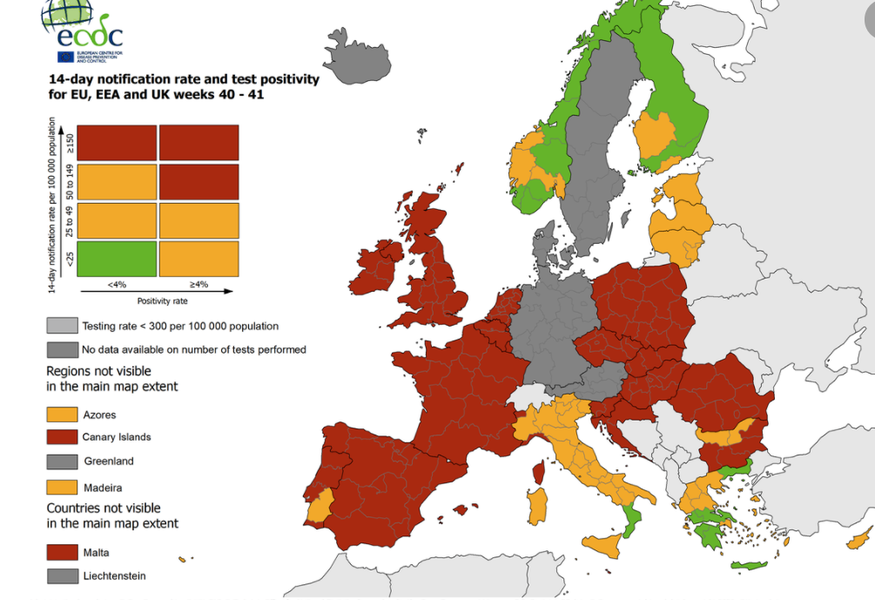
[ad_1]
In this map promised on Tuesday in Luxembourg for better harmonization of travel recommendations, only three countries in the EU or the European Economic Area (Norway, Finland and Greece) are marked largely in green, while five countries (Italy , Cyprus, Estonia, Lithuania and Latvia) are marked mainly in orange.
However, five countries (Germany, Austria, Sweden, Denmark and Iceland) were not assessed on this color-coded map due to ‘lack of test data’ for an unspecified reason. The ECDC has not yet been able to comment on this absence.
According to the recommendations, unlike those coming from a green zone, travelers coming from an orange and red (or gray) zone may be subject to restrictive measures upon arrival.
In total, 16 EU countries, including France, Spain, Poland and Romania, as well as the United Kingdom, appear in red on this map showing the European epidemiological situation.
This mapping, detailed down to the regional level, aims to define risk areas, but is not limiting.
It combines three criteria for classifying countries: the rate of new cases per 100,000 inhabitants in the last 14 days, the number of tests per 100,000 inhabitants carried out in the last week, and the rate of positive tests (above or below 4%).
According to the compromise decided on Tuesday in Luxembourg, this map must be updated every week.
To be classified as green, a region must have less than 25 new cases per 100,000 inhabitants in the last two weeks and a positive percentage of less than 4%. An area is marked in red when the number of new cases exceeds 50 per 100,000 inhabitants in two weeks and the rate of positive cases exceeds 4% or when the criteria for new cases exceeds 150.
The orange category groups two categories: regions with less than 50 cases per 100,000 inhabitants, but a positive test rate greater than 4%, or those where there are between 25 and 150 new cases per 100,000 inhabitants, but a positive test rate less than 4 %.